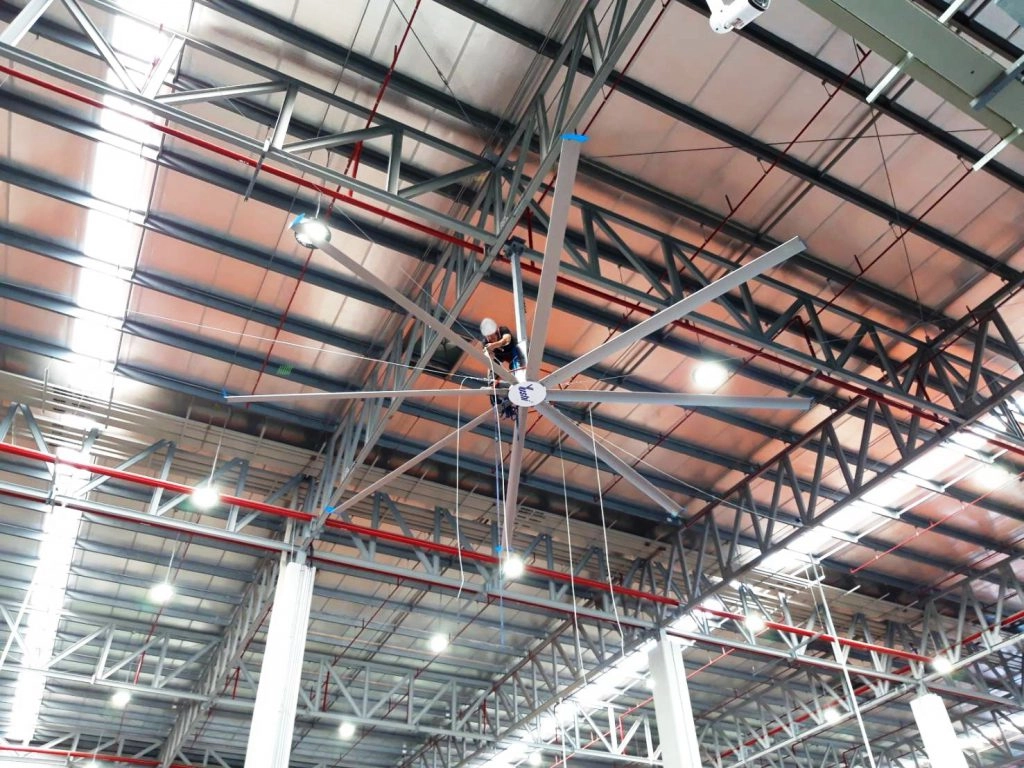Hybrid Ventilations System

Hybrid Ventilations System
Hybrid is not something new or a newly coined term, but it's a term we're very familiar with. When we talk about hybrid, it generally means being more energy-efficient than usual. This is because this system is pioneered by Toyota, the first car manufacturer in the world to utilize hybrid technology in mass production vehicles. They introduced the Toyota Prius model in 1997, which has been highly successful over the years. Thus, the term "hybrid" has become synonymous with energy-saving systems.

As a result, hybrid systems have become widely used in engine systems that use both internal combustion engines and electric motors working together. This system has also been adapted for use in various other systems, such as hybrid ventilation systems.

Hybrid Ventilation Systems
Typically, ventilation system design is done as a single ventilation system, which is predominant. You can observe that various buildings and facilities have a single ventilation system, relying almost 100% on the primary system alone. This puts a heavy burden on the main system for ventilation or cooling purposes. Over time, these ventilation systems become less efficient, yet they continue to work as hard as before to maintain efficiency. Without regular maintenance, this can lead to a shorter lifespan and higher energy costs as the machinery has to work at full capacity constantly.
However, if ventilation system designers design multiple ventilation systems to work together (Hybrid Ventilation), not only will it improve ventilation and cooling efficiency, but it will also reduce the burden on the main system, leading to energy savings and optimal energy conservation. The foundation of such a system lies in intelligent design in every dimension, from the layout of the system, coordination between systems, energy allocation, and maintenance, all at a lower cost than using a single ventilation system.

For example:
Ventilation Designer
Problem: In a factory building with high heat, which is a closed rectangular building with a high roof, heat originates from three sources: external heat (sunlight) and internal heat from machinery and human bodies, causing the building to accumulate heat constantly. However, there was no properly designed ventilation system from the beginning, resulting in employees being unable to work for long periods due to the unbearable heat, leading to low productivity. Investing in an automated system (Automation) would be too costly initially. The question is, how should an efficient ventilation system be designed?
The design of a ventilation system involves two main considerations:
Designing a ventilation system for the entire area.
Designing a ventilation system for specific areas (spot ventilation).
From the initial problem statement, we can see that the rectangular building with a high roof and closed structure has machinery and people generating heat. The business owner needs to ventilate the heat from the area as quickly as possible. Initially, the design should focus on overall ventilation principles by increasing the airflow rate to draw out the heat from the area quickly and efficiently to achieve a high Air Change rate. The objective of this project is to enable employees to work for longer periods to increase productivity. Achieving this requires the use of spot ventilation system design so that employees can work longer and increase productivity. The principles described above can be achieved using just one type of fan (Single Ventilation). However, this design approach leads to the consequences described earlier in terms of increased energy consumption and higher installation and maintenance costs.

On the other hand, if we apply a Hybrid Ventilation System, four systems are installed together in the same area. The first system uses Big Ceiling Fans to increase air circulation and cool the area under the roof. The fans can distribute air vertically throughout the entire space. The second system uses Evaporative Cooling Fans to generate cool air and increase relative humidity (%RH) in the area, allowing the temperature in the area to decrease by 5-10 degrees Celsius. The third system uses Farm Fans, which are efficient in extracting large amounts of air to remove hot air and excess moisture from the area by transferring air from the Big Ceiling Fans and Evaporative Cooling Fans. Normally, farm fans have an effective suction range of no more than 1 meter. The last system is an Exhaust Fan system, which operates through ductwork to extract heat directly from machinery sources to prevent the other three systems from working beyond capacity. With this setup, the Hybrid Ventilation System can work efficiently in all dimensions, including cooling efficiency, energy cost savings, improved employee productivity, and lower long-term machinery maintenance.






 Facebook
Facebook Line
Line YouTube
YouTube Shopee
Shopee